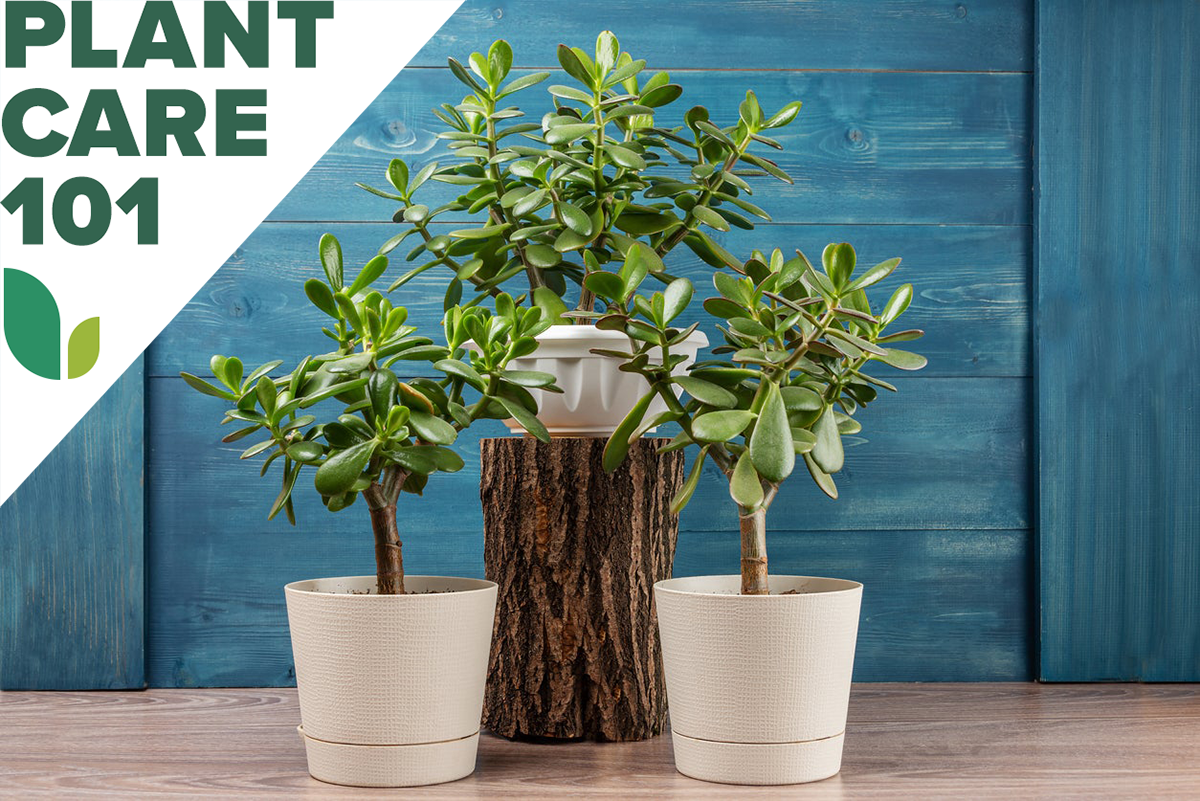

We may earn revenue from the products available on this page and participate in affiliate programs. Learn More ›
Like the green stone for which it is named, the succulent jade plant symbolizes another kind of green: It’s often called “money plant” for its supposed ability to impart prosperity and good luck. Even if that golden promise doesn’t pan out, you won’t have wasted much money or effort in the process, since jade is one of the most low-maintenance indoor plants.
Your successful jade plant care can give you a reputation for having a green thumb even if it doesn’t bestow much folding green. But be sure to place it front and center in your home—just in case!
Jade Plant Care at a Glance
Common name: Jade plant, money plant
Scientific name: Crassula ovata
Soil: Cactus and succulent potting soil
Light: Sun, partial sun, bright indirect
Water: Low
Food: Balanced or cactus/succulent plant food
Temperature and humidity: Average household
Propagation: Stem cuttings
Safety: Toxic
Jade Plant Characteristics
Native to South Africa and among the easiest indoor plants to grow, the jade plant (Crassula ovata) can grow to 10 feet outdoors in USDA Zones 10 and 11, but it probably won’t surpass 3 feet indoors. With a woody trunk and 1- to 2-inch fleshy oval leaves often outlined with red, this jade succulent has the appearance of a small tree.
Jade trees can produce clusters of 1/2-inch pink or white star-shaped and fragrant flowers at the tips of their branches from autumn through spring. However, blooms are more common on plants 10 years old or more and on outdoor rather than indoor specimens, since long nights are required to stimulate blooming.
Related: Count On These 25 Indoor Plants for Easy Color Year-Round
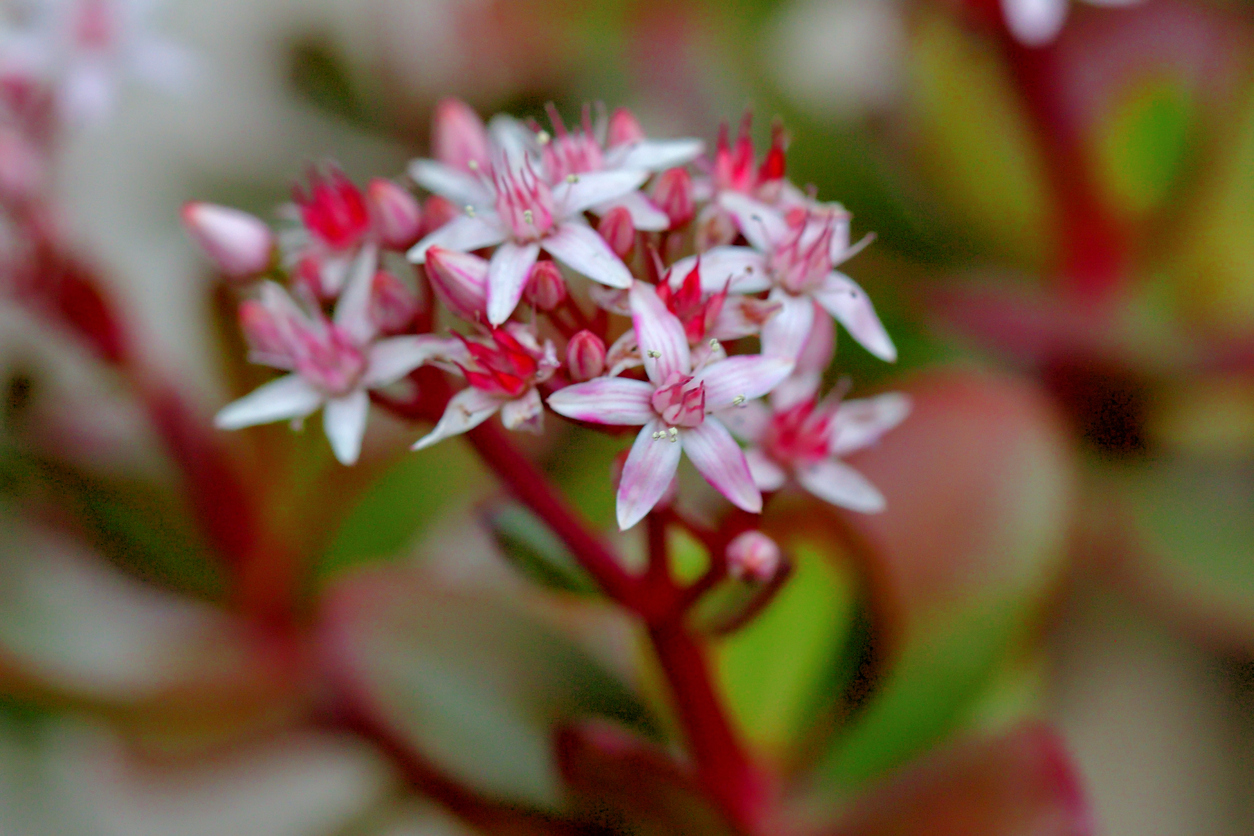
Types of Jade Plants
- Crassula ovata ‘Gollum’: Gollum jade grows to 3 feet high with red-tinted and “suction-cupped fingers,” which are actually unusual tubular foliage.
- Crassula ovata ‘Hummel’s Sunset’: Looking as if it retains a sunset glow, Hummel’s Sunset, or golden jade, can reach 3 feet in height with leaves that turn yellow with red edges if kept in full sun.
- Crassula ovata ‘Tricolor’: This variegated jade plant grows to a foot or more in height, and its leaves have streaks of white and/or yellow variegation and a pink outline.
Selecting Soil for Jade Plants
Because jade plant needs well-draining soil, give it cactus and succulent potting mix. If placed in a pot that is on the short and squat side, this mix should be weighty enough to prevent the plant from tipping once it becomes top heavy, as jade plants tend to do. Alternatively, a soil composed of two parts standard potting mix to one part perlite should be fast draining, but it’s possibly not weighty enough to support the plant. If you use this lighter mix, you may want to add gravel to the bottom of the pot for a ballast.
As for repotting jade plant, it doesn’t mind tight quarters, so the succulent should only require a move about once every 2 to 3 years. After transplanting it, avoid watering jade for a week and put off fertilizing it for a month to give its roots time to adapt to the change.
The Right Light
Jade plants prefer at least 4 hours of direct sunlight per day, but they can get by on the same amount of bright, indirect light. So a position in or near an east-, south-, or west-facing window should work, while the light from a north-facing window may be too dim.
When the edges of the leaves appear to be outlined in red, the plant usually is receiving enough illumination. If the foliage grows lanky and floppy and appears too dark green, it probably needs more light. Make any move to a sunnier position a gradual one, however, to prevent the plant from burning due to a too-sudden change.
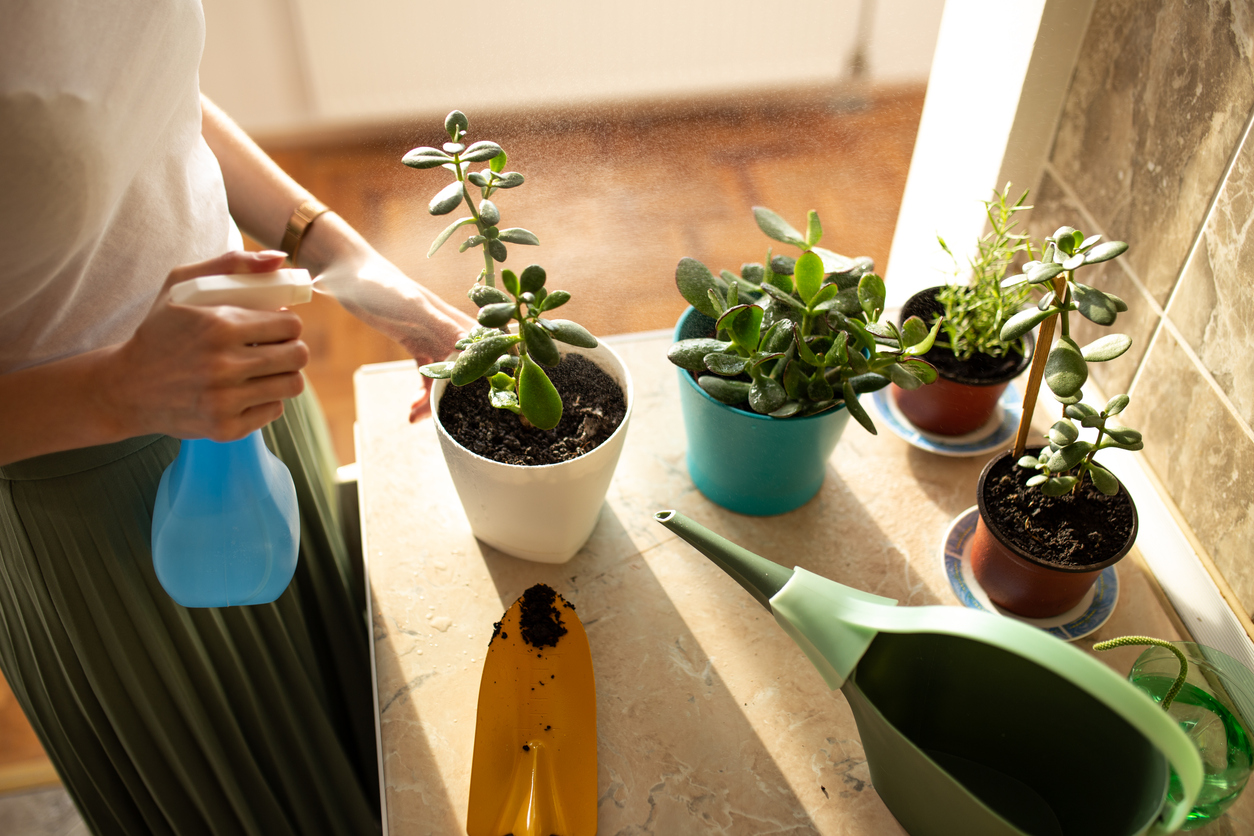
Watering Jade Plants
How often to water jade plants changes with the seasons. Because jade is prone to stem rot if overwatered, allow its soil to dry out to at least 2 inches below the surface before you water it again. Falling or shriveling leaves or non-corky brown spots on the foliage indicate that you aren’t providing enough moisture, while leaves with water blisters or corky brown spots warn that you are providing too much.
Although some sources recommend letting the potting mix dry out completely before you water again—especially in winter—that usually isn’t a good idea. Overly arid soil tends to pull away from the sides of its pot and is difficult to remoisten properly, since water will run down the sides of the pot rather than dampening the soil near the roots.
Fertilizing Jade Plants
Feed your jade plant once every 2 weeks from spring through autumn with a balanced plant food in which all the numbers of the N-P-K ratio are the same—such as 10-10-10. However, use that fertilizer only at half strength. For example, if the directions call for 1/2 teaspoon of plant food per gallon of water, reduce the amount to 1/4 teaspoon. Refrain from feeding the plant during the winter months.
If you prefer to try a fertilizer made particularly for cacti and succulents, such as 1-7-6, mix it according to the directions on the label and apply it every 2 weeks during the growing season. Just keep in mind that the growing season doesn’t include winter, even for an indoor plant.
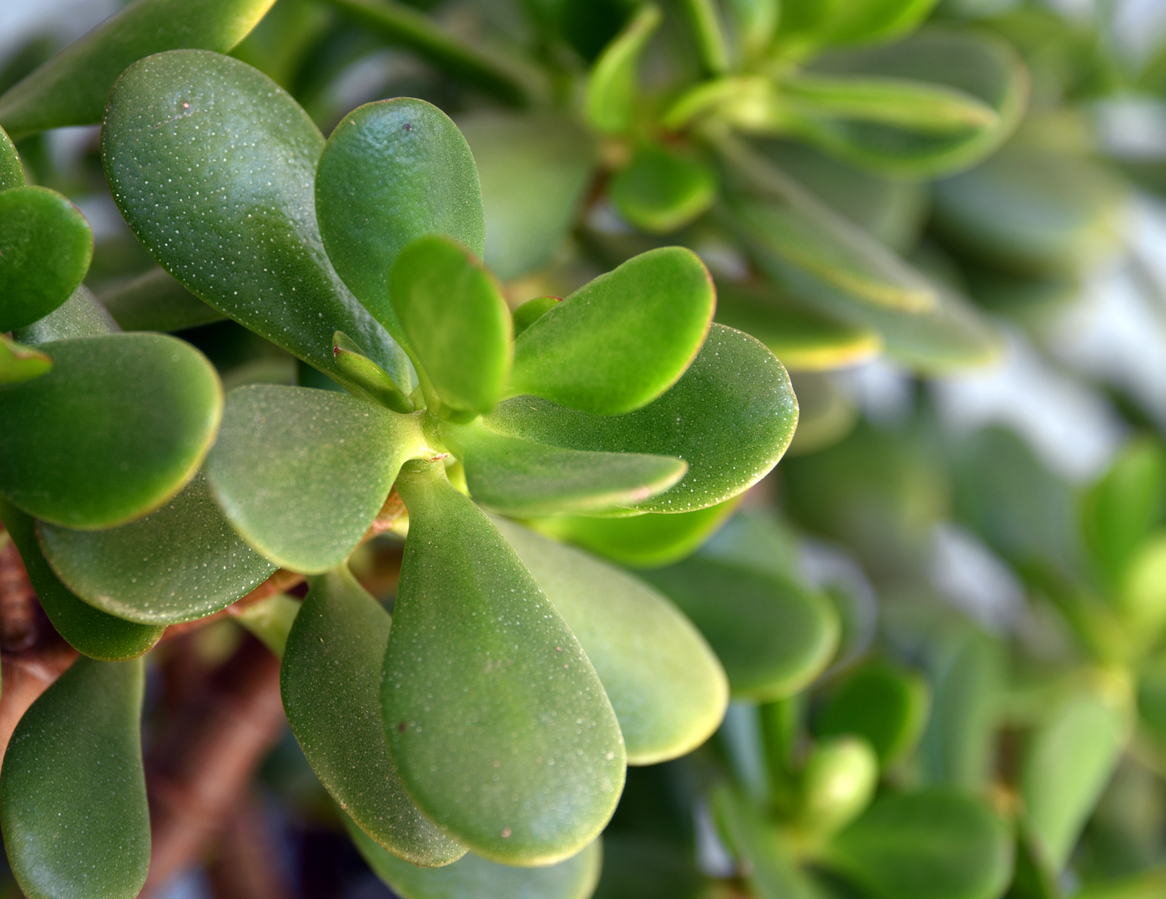
Setting the Temperature and Humidity
Average household temperatures (65 to 75 degrees Fahrenheit) and typical indoor humidity levels suit jade plant fine, though it does prefer to be cool at night. So, thrifty plant owners who turn down the thermostat a bit in winter at bedtime should keep their jade plant happy while saving some money.
If you wish to try to force an older jade plant into bloom, place it on the windowsill of a chilly room that receives sunlight during the day but isn’t lighted during the evening. For the best results, keep the plant at a temperature between 55 and 60 degrees Fahrenheit for 6 weeks before returning it to normal conditions again.
Propagating Jade Plants
If you’d like to make more jade plants to share with your friends, take 3-inch cuttings—preferably with a couple of pairs of leaves each—from the tips of your plant. Instead of potting up those pieces right away, lay them in a bright, airy spot out of direct sunlight for 5 days or so until calluses form over their cuts.
Then pot the pieces, standing them upright in soil that is slightly damp, and place them in a position with bright, indirect light. Refrain from watering the starts again until they root, which probably will take at least a couple of weeks.
Safety Considerations
Jade plants are considered toxic since they can cause intestinal distress—diarrhea and/or vomiting—in both people and their pets, while the plants’ sap might irritate the skin enough to cause a rash. So keep them out of reach of young children and pets and wear protective plastic gloves if you intend to prune the plants or take cuttings from them.
You’ll also want to take into account the weight of large specimens when deciding where to place a potted jade plant. A heavy plant that falls can cause injury to the toddler who pulls it down or the pet who knocks it over.
Potential Pests and Diseases
Jade plants may be afflicted with scale insects, which do indeed look like 1/16- to 1/2-inch brown scales. Then there are mealybugs that look like 1/8- to 1/4-inch bugs that are mealy, but also resemble tiny flecks of cotton. You can eliminate either type of insect with a cotton swab dipped in rubbing alcohol. Simply dab a bit of the alcohol onto each insect.
Be sure to pursue the intruders into the crevices of the plant and to the undersides of the leaves, where they are inclined to lurk. Avoid spraying jade plant with insecticidal soap, which can damage its foliage.
Related: Solved! Why Are My Succulents Dying?
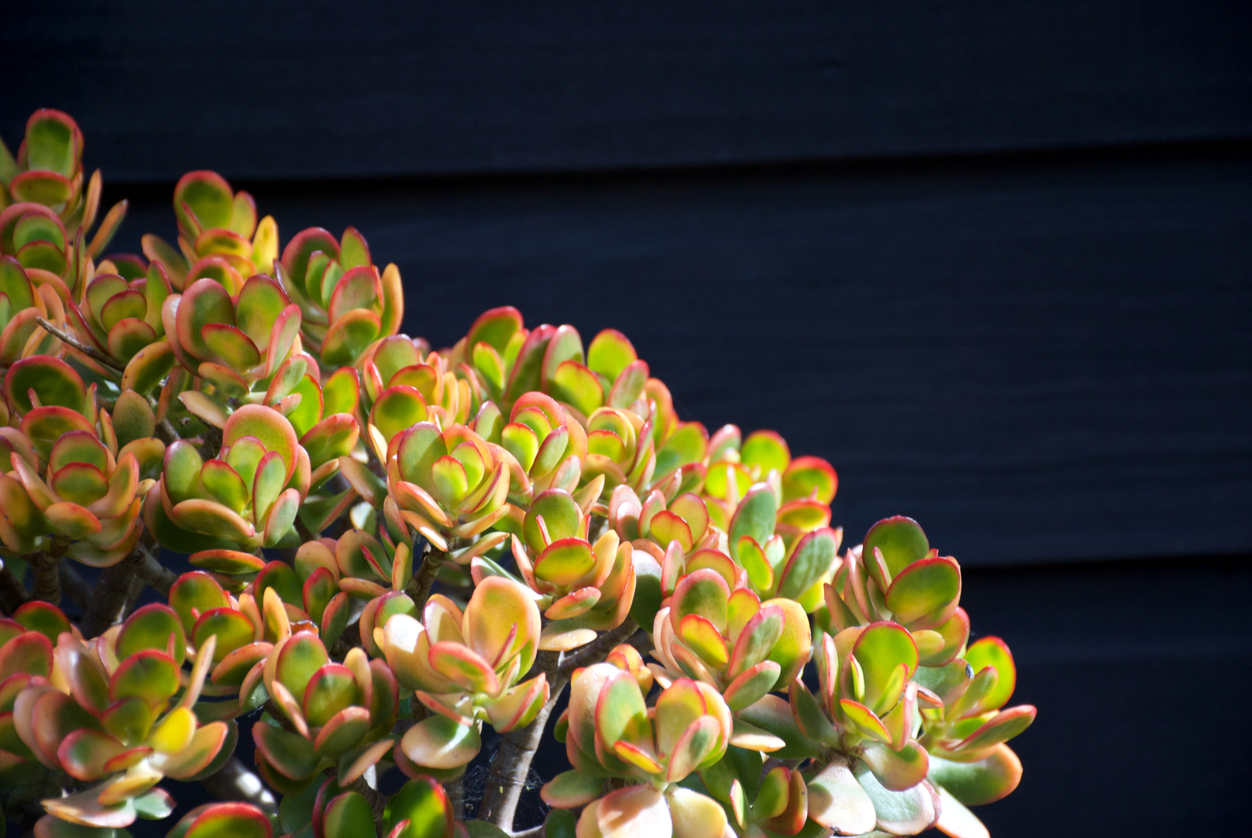
FAQs About Jade Plant Care
You might still have some questions about how to care for a jade plant, so check out the following quick answers to frequently asked questions to learn some of the basics and no-nos.
No. Jade plants don’t like high humidity, so they don’t respond well to misting.
Position your jade plant where it receives plenty of illumination, either sunlight or bright, indirect light.
No. When directly added to houseplant soil, coffee grounds may cause mold or interfere with water absorption. It’s better to compost those grounds instead.
No, biodegradable pots aren’t appropriate for houseplants, since such pots are designed to break down over time.
